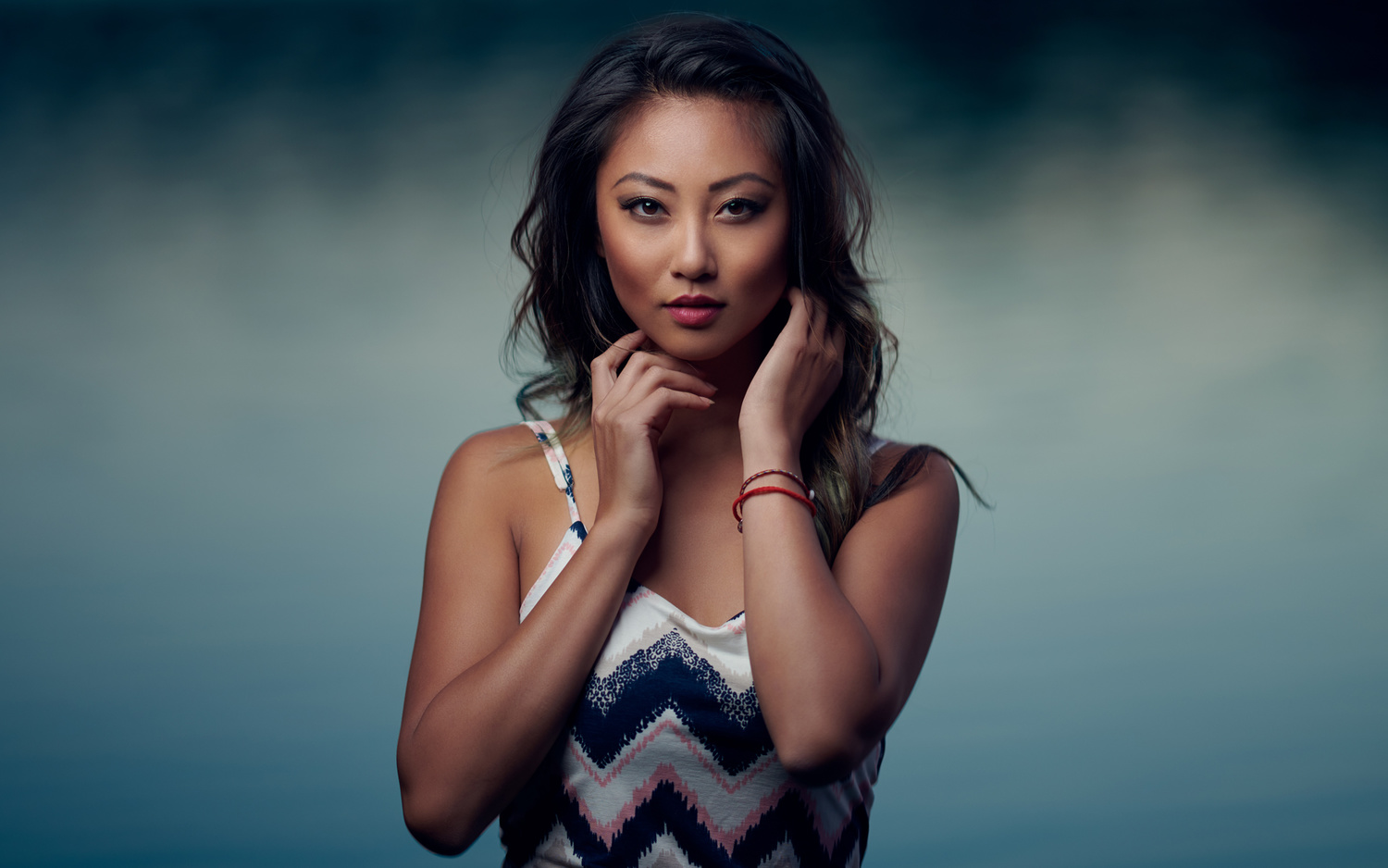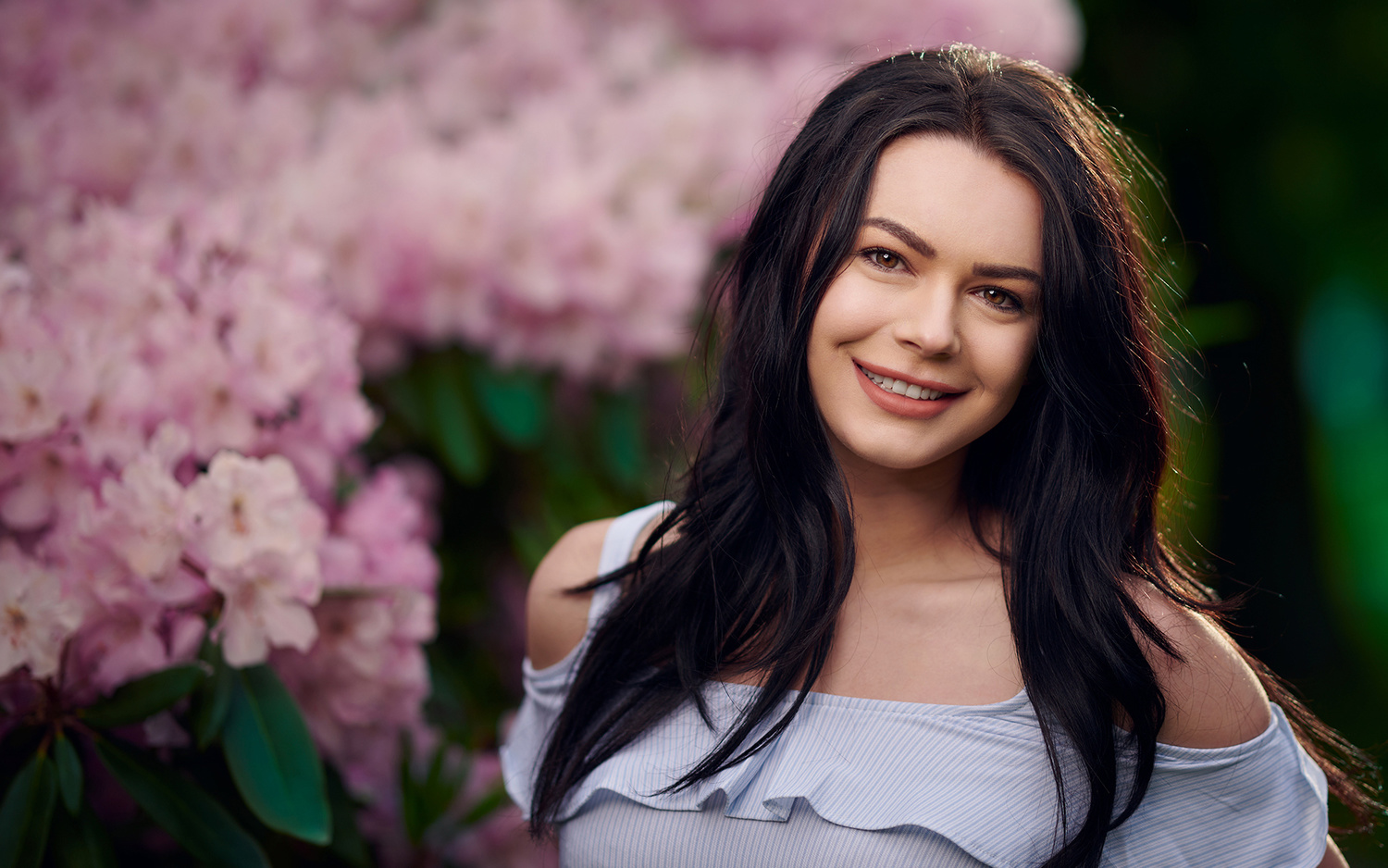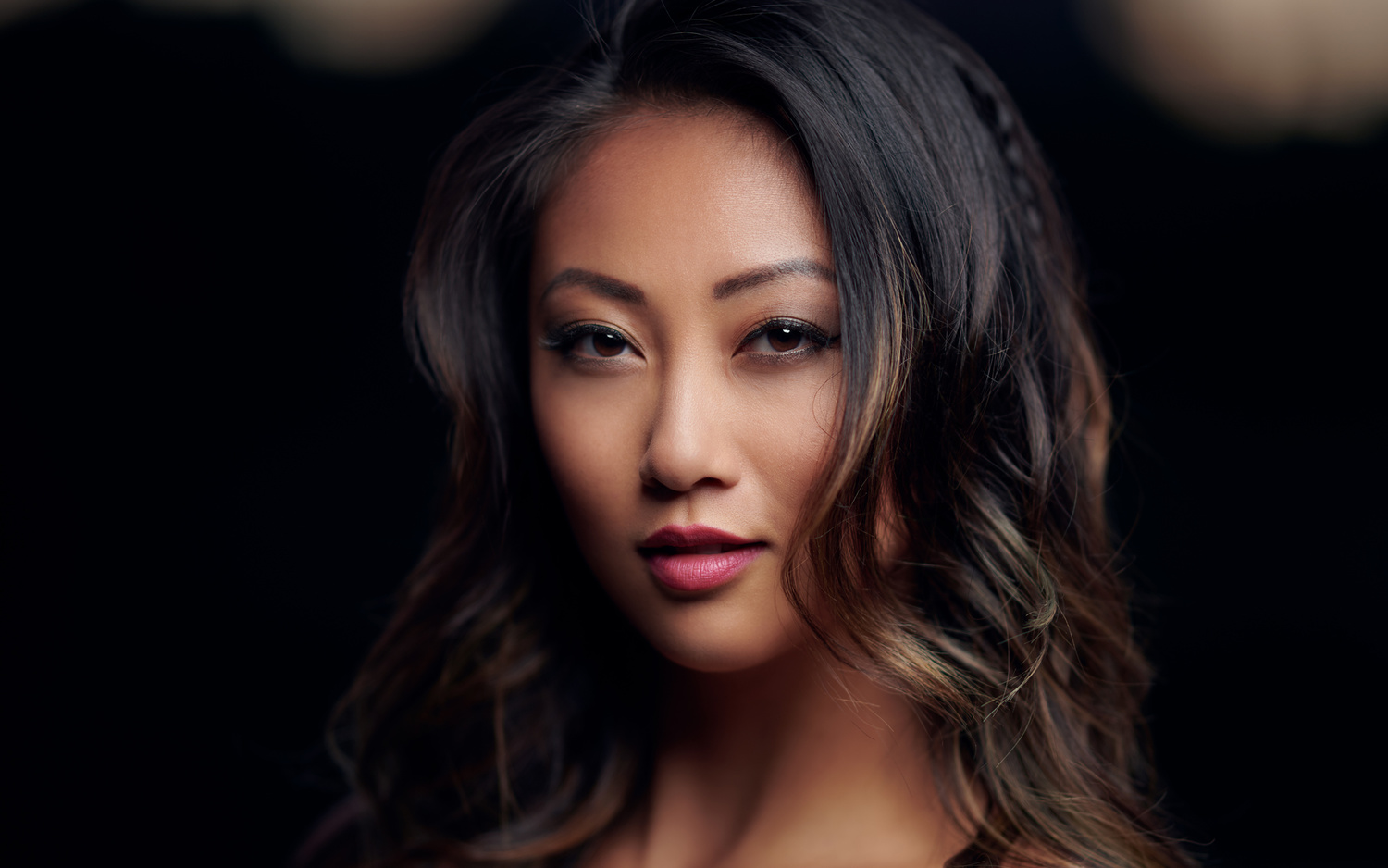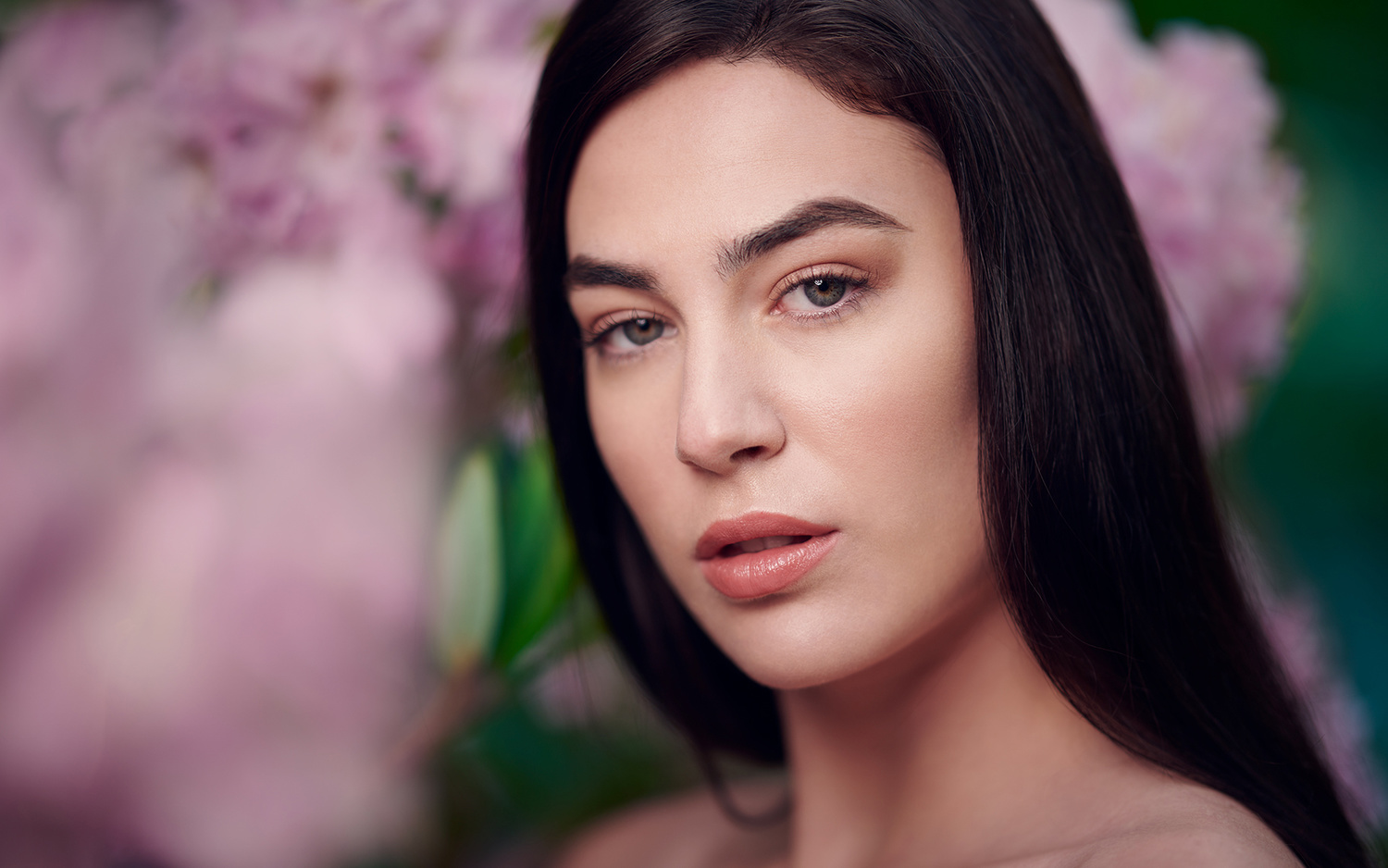If you're serious about improving your Portraits, then pull your seat in a little closer. Because in this article you’re about to discover 7 compelling reasons why, using flash is much better for your Portraits than just regular natural light. But first, can I ask you a question?
Could you for a moment, push aside any preconceived ideas you may already have about flash photography and be open to the possibility that there maybe something, you just might be missing out on by not using flash on your photo shoots.

One light portrait taken with the Godox Ad 600 Pro in high spped sync with the 36 Westcott Rapid Box XL and the Nikon D850 with the Nikon 105mm F1.4 lens.
If you’re like the majority of photographers out there, you’re most likely looking for that slight edge that will help you to take your images to the next level. And if you are not already using flash when your capturing your portraits, then this article might be exactly what you’ve been searching for.
As you read each and every word on this page you'll discover why using flash in your portrait work, just might be better for your portfolio than using natural light alone.

One light setup with a 36 inch light modifier. Godox AD 600 Pro with the Westcott Rapid Box Xl.
Let’s get into the 7 reasons why flash portraits are better than natural light in my opinion, off camera flash is a much better option for taking photos of people than relying on natural light alone to capture your portraits.
1) Using off camera flash allows you to control the direction of the light and where the shadows fall on your subject's face. Allowing you to create different lighting patterns to flatter your subject and control the overall mood and feel of your images.
If you don’t like the position of the light, you can easily move your strobes position to exactly where you want it, which isn’t always the case when using only natural light.

One light setup, 36 inch light modifier 3 feet from the model.
2) When you are equipped with off camera flash you can control the quality or the softness of the light on your subject's or client's face. Simply by using a larger light modifier and moving it in closer to your subject which will allow to you can create soft flattering light.
A good tip is to start with your light modifier the same distance away from your subject as the diameter of the light modifier you are using. For example, if your modifier is 36 inches or 90 centimeters in diameter.
You would start by placing your light modifier 3 feet from your subject roughly 45 degrees and down depending on the look you are going for and take a test shot. From there you can adjust the distance and position of your flash to taste, allowing you to create an wide range of lighting patterns quickly and easily.
The sun on the other hand can be very harsh at certain times of the day making it a little more difficult to capture softly lit portraits.

Shot at sunset with a flash camera right.
3) You can capture stunning portraits any time of the day or night because you have a portable light source with you that you can take anywhere you want to go.
With natural light you can only photograph during daylight hours and for the very best light for portraiture you either have to shoot early in the morning or close to sunset, just ask landscape photographers.
4) With off-camera flash you can shoot indoors during a dark wedding reception for example and create cleaner looking images than if you were to boost your ISO to capture natural window light.

Simple one light setup using the Godox AD 600 Pro with the Westcott 36 Rapid Box XL.
5) You can use a portable flash on the top of your camera giving you a very portable portrait lighting setup for events, weddings or just everyday shooting and you’ll be able to illuminate your subjects allowing them to stand out from the background.
6) If you are armed with a flash you have greater control of the background exposure when you are shooting outdoors on location. Our eyes can perceive roughly 20 stops of light but most cameras can only capture between 10 and 14 stops of light.

One light camera right.
You may have noticed this if you tried to shoot video with your camera, you have to make a conscious choice on whether to expose for the highlights or get an accurate exposure on your subject. You can’t do both and capture the whole dynamic range of the scene.
Which means if you want to capture the sky and not blow out your highlights and still have a well lit portrait then you have to reduce your background exposure in camera to expose for the highlights.
Which often means if you were shooting with natural light you would have to raise your shadows in post production to achieve an accurate exposure on your subject which can add noise to the image.

By exposing for your highlights and using flash on your subject you can capture more dynamic range without blowing out your highlights.
With flash you can get a well exposed background and and have a good exposure with soft flattering light on your subject. Allowing you to reduce the dynamic range of the scene so you can capture all of the details.
7) With flash you can position the catch light from the flash in the optimal position of the eyes which is between 10 and 2 o’clock, this will bring life and more light into your subject's eyes and add more punch to your portraits.

You can use the sun behind your subject as a hair light and use fill flash in front of your subject for a two light portrait lighting setup outdoors.
Bonus reason 8) Off-camera flash can add more pop, saturation, and drama as well as allowing you to use colored gels for effects that you would not be able to get from just natural light alone.
Now at this point in the article you may still disagree on the whole flash versus natural light debate but let me give you another way to think about it.

Background bokeh was created with bubbles...
Let me start by asking you a question: if you were the director of photography for a blockbuster movie that contained both daytime and nighttime scenes, would you be able to capture your vision for the movie with just natural light alone? Or, do you think it would be easier if you had more control of the light in the scenes?
For example, if you wanted to create different moods or to convey different emotions would it be easier for you if you had more control of the light direction and quality of the light?

Note the position of the catchlight in the eyes. It should be between 10 and 2 o'clock.
Let me ask you another question: do you think the majority of movies or television that you watch, use only natural light or artificial light sources? They most likely use a combination of both because it gives them added flexibility in capturing their artistic vision. Using flash will also help you as an artist as well because it will allow you to control light which is like a photographer's paint brush.

Getting a correct exposure in camera reduces your retouching time in post.
In conclusion, the debate between using flash over natural light can be one that you may feel very strongly about and this article may not have changed your mind about the subject.
If you still feel that shooting your Portraits in natural light is better than using flash. Instead of leaving a comment such as: Natural light is better, could you instead do me a favor and list your top 3 reasons why you feel that natural light is better than using flash.
By leaving your top 3 reasons, you can also help other photographers better understand your point of view and you may help them gain a greater understanding of using light in their own Photography.
All of the images are a one light set up using the Godox AD 600 Pro with the Westcott 36 Rapid Box Xl. The camera used was a Nikon D850 with the Nikon 105mm F1.4.







Oh, FStoppers, how quickly you forget!
https://fstoppers.com/originals/mastering-all-light-bringing-peace-strob...
That was a much better article.
I love your work Craig.
Thanks Jeff, I appreciate that.
shooting portraits as a Fashion Photographer for me has nothing to do with shooting portraits in general. On almost every portraits post and video we see portraits of young women with perfect faces. For me portraits mean faces, that tell a story of there life.
On these examples the light looks artificial and does not correspond to the ambient light. A face perfectly illuminated in a dark background landscape looks simply artificial.
Appreciate your insight on this Craig! well written and even though I already shoot mostly flash I have a greater understanding as to why I do and why it works on certain occasions. Hope not everybody gets hung up on a title. This is amazing work too.
Thanks Alessandro, I appreciate you keeping it positive.
I don't think natural light is necessarily better but here are 3 reasons why I generally prefer it:
1. I tend to capture better and more candid expressions from my subjects as I spend more time focusing on them and less time on gear.
2. There are certain situations where its just not practical to set up off camera flash, like crowded streets, uneven surfaces etc.
3. Carrying around all that gear can be a pain in the arse. :)
I use flash too, just not as often.
Hey Dave, those are great points. Thanks for sharing your thoughts.
1. Visualize the shot.
2. Get it.
I'm all about the flash with portraits.
Yes, flash is a useful tool for sure.
I do believe that flash helps optimize the exposure quality and helps the sensor perform at its maximum ability but falling into the habit of always using flash can become formulaic and all of the images end up looking too similar and overly professional.
Maybe “slick” is a good word. Finding the right combination of available light and flash where the flash doesn’t dominate the exposure is the hard part. Directing a modifier constantly at your models gets repetitive. There is a natural tendency for one to find a combination that works or looks great and flatters the talent or subject and for one to keep using that combination for reasons of convenience. Unless you have a super special subject or concept regular shots of beautiful people can become tedious and even clinical under artificial lighting.
I love flash photography as much as the next guy but I find it challenging and cumbersome. Some of the better examples have been when the flash emulates a justifiable or believable light source like a window or a lamp close by in the room or a neon sign. Having a model standing in front of a sunset and then throwing some perfectly flattering light at her doesn’t feel genuine if there is no justification for where the light is supposed to be coming from. The overly even and predictable quality of the flash simply looks unnatural.
In the end you have a lot of “nicely exposed”, “nicely lit” photographs that all look alike and are devoid of spontaneity or depth.
Dave
Thanks for sharing your thoughts David.
Enjoyed this article, cheers Craig!
Thanks.
Great article and good photos, being able to work with flash can be technically challenging but rewarding,it give you maximum control and creativity. Flash or natural light is not a debate to me, it to every photographer to find his style.
Thanks Denis.
And now Fstoppers becomes Petapixel... very sad
Stop steering people in sometimes the wrong direction with bait click titles - this isn't Youtube. Its a place of learning for people who want to learn from professionals. No technique is "the best" and no gear is must have. Educators should give them the tools to succeed - not misleading them.
Exactly, imagine a young photographer with little to no experience now reading this article, parroting this information around to everyone like an annoying brat. Imagine he only learns flash and decides to block out the idea of natural light for portraits for a long time. He would be stunting his own growth and opportunities because of Craig's carelessness.
So far he only responded to "positive" comments here but not any of the constructive criticism ones. Kind of loses credibility as an author here next time. I surely won't be reading with any form of trust next time.
Edit: wow Craig even downvoted this but won't respond LOL complete joke
if you want put photo on Instagram, use natural light and don't need dslr, smart phone is enough; if u want print that for gallery or client, use flash. and if u want to use flash, u have to be professional and need gears and knowledge. that's simple.
I won't say that natural light is better or worse. It is just better for me and the type of work I do. I will list some reasons why I, personally, prefer natural light in an outdoor shoot.
1. It is more challenging in a certain way because you can't control the sun, therefore you have to think more when composing.
2. I do not have to carry a lot of gear with me.
3. The look of natural light obviously resembles what the eye usually sees naturally, so the pictures tend to be more "realistic" or "relatable".
4. At weddings, as my style is documentary, I will never use off camera flash. I only use on camera flash if I absolutely need to.
5. I absolutely dread setting up stuff for a long time, only to then pack everything and do everything again in the next location.
Excellent points Cristian.
Top reason why natural light is better: it looks natural.
I have dipped my toe into off camera flash photography for a couple of years now. Flash adds a whole new level of potential to ones photography. It's also a huge learning curve. Many of the photographers that I see that make comments about being a "natural light photographer only," do so because they haven't and don't want to invest into that steep learning curve, and equipment upgrades, that flash photography requires.
Thanks for sharing your thoughts on this topic Keith.
Wow. Beautiful woman
Quite often the better looking flash portraits use flash and natural light working together. Don't forget to balance your flash colour with the natural light using gels. If it's blatantly obvious you're using flash in your environmental portrait, you may need to revisit how you're using your flash.
Good tip Tom.
Interestingly for me transition was opposite. I started my photography journey from passion to a portrait strobbing and slowly move towards natural light. Where adding artificial light to a scene is for sure fun and interesting it does slow me down in my creation. Limiting myself via actual light direction makes me more focused on using what I have and how to control it. It is also very challenging (but possible) to have a realistic and natural effects. As long as you're not going for a plastic/commercial look you have to start using a huge diffusers that are bit hard to move around in outdoor. Of course if you have a few assistants that helps you with moving things and bit extra of time it's always fun. Keep in mind that in dark conditions human pupil gets huge and flash duration is too small to make it smaller. Just 2 cents from my side.
Hey Pawel, thanks for sharing your perspective.
Photographers are creating amazing work in all kinds of light all the time.
I use flashes and reflectors because I typically don't get to choose where and when I shoot. If the light isn't good where and when my client wants the pictures, I have to make it good.
If you would like to see some behind the scenes footage from some of the images in the article above, you can check out the video that relates to the article here:https://www.youtube.com/watch?v=pHo69jBsCtw
Seven reasons why portraits of women get more views on photography sites than portraits of men.
Craig! Great article, and amazing photos of stunning models. You have clearly taken your art and the gear you used as your tools, and made a great case for what you share. I agree that it's all how we use the tools we have that allows us to create the art of excellent portraiture. And I agree that flash adds an element that makes the whole process easier and more effective. I also want to affirm the work of Irene Rudnyk, who is one of the Masters of Natural Light. I think the truth is that our goals also impact our craft, and what we are after. She makes a great case for using sun, shadow, sky, plant life ~ and no doubt she's so amazing that she could likely do it with flash as well. For me, flash definitely makes it easier, even if not "better" per se. Thanks for your amazing photography! Truly stunning.
It depends on the efect you want to achieve, sometimes natural light is more beautiful, but of course a flash light give you more possibilities